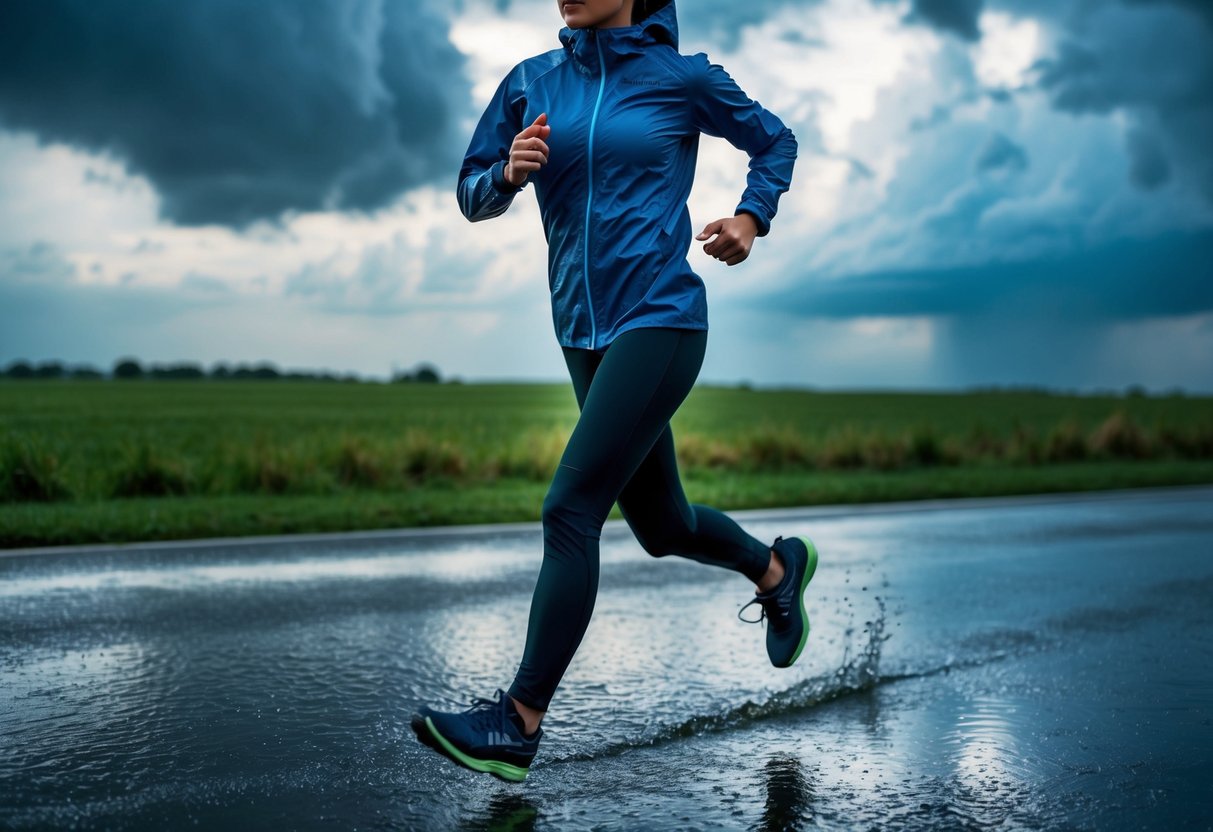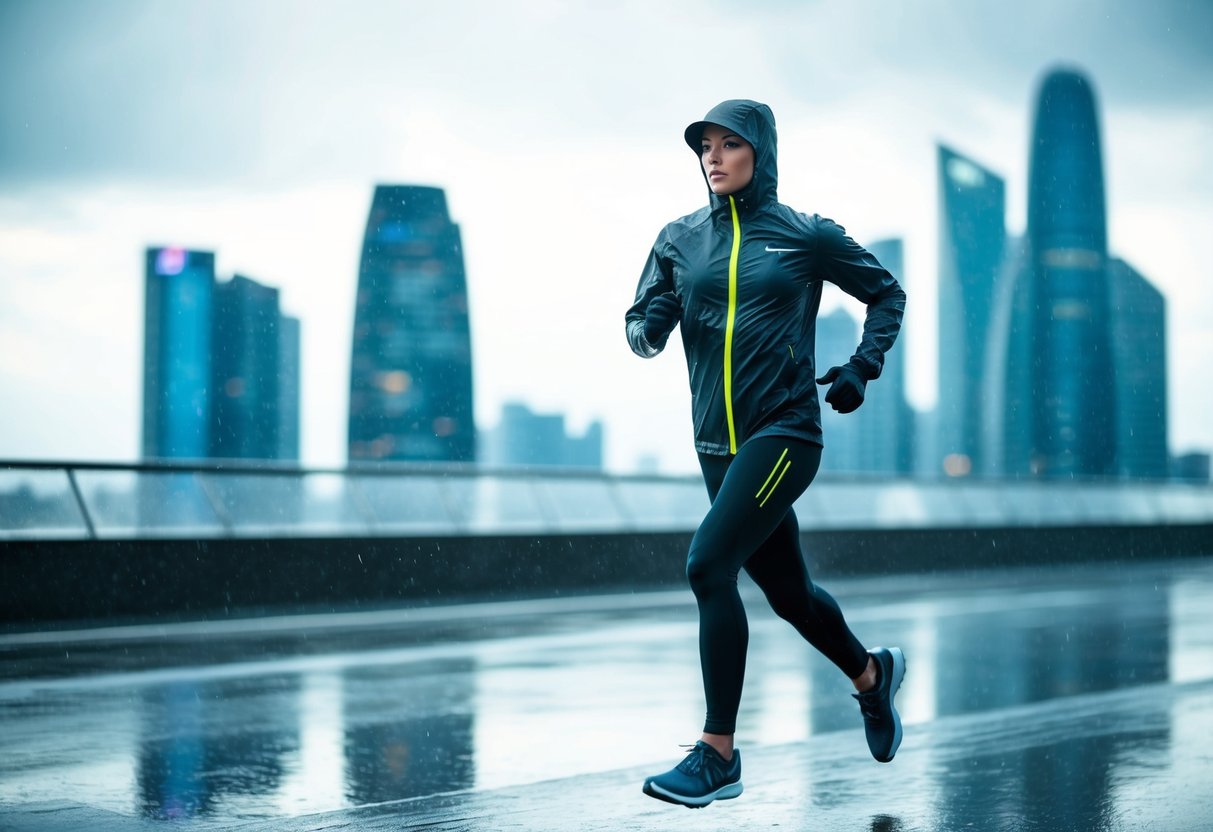
Features of Waterproof Activewear
Waterproof activewear is carefully designed to withstand harsh weather conditions, providing essential features for athletes who train in all environments. It offers fully taped seams, ease of movement, and ventilation systems to ensure comfort and functionality throughout any workout.
Fully Taped Seams and Construction
Fully taped seams are crucial in waterproof activewear. They prevent water from seeping through stitches, ensuring complete protection against the elements. This feature is essential because even the most lightweight fabric can lose its effectiveness if water penetrates through seams.
Manufacturers often use specialized tapes to seal these seams. This process enhances the garment’s durability. Additionally, high-quality materials are typically chosen for both the fabric and the tape, further ensuring a secure barrier against moisture.
This type of construction provides reliable performance in wet conditions. Whether running in heavy rain or snow, athletes can rely on these garments to keep them dry. Fully taped seams are integral to maintaining the integrity of waterproof activewear.
Ease of Movement and Comfortable Fit
A comfortable fit and ease of movement are vital for an optimal activewear experience. These garments are designed to accommodate a range of motion without restriction. The materials used are often stretchy and lightweight, ensuring that the wearer can move freely during physical activity.
Achieving a comfortable fit involves considering the garment’s structure and the type of fabric. Many designs incorporate articulated knees or gussets in the underarm areas, allowing greater flexibility. These features ensure that the attire does not bind or chafe during movement.
In addition, ergonomic designs cater to different body shapes and sizes. This thoughtful approach means athletes can focus on their performance. Proper fit is crucial to ensuring activewear supports physical activities while offering the highest level of comfort.
Ventilation Systems
Ventilation systems play an essential role in regulating body temperature. Many waterproof garments include strategically placed ventilation panels or zippers. These elements are critical in preventing overheating, especially during high-intensity workouts.
These systems work by allowing air to circulate within the garment. As sweat generates during exercise, ventilation panels ensure that moisture doesn’t accumulate, enhancing comfort.
Manufacturers often integrate mesh linings or perforated panels. These designs maintain the waterproof quality while providing breathability. Ventilation systems are especially beneficial in maintaining balance between protection from external weather and internal cooling, ensuring athletes stay dry and comfortable.
Technological Advancements

The evolution of waterproof activewear owes much to innovations in materials and design. These advancements have led to improved performance, comfort, and environmental responsibility.
Gore-Tex and Other Waterproof Technologies
Gore-Tex remains one of the most revered waterproof technologies, owing to its unique membrane that both blocks water and allows moisture to escape. This breathability makes it a staple for athletes, preventing overheating during intense activities. It is renowned for its durability and ability to remain effective even after extensive wear.
Other technologies also have emerged, offering alternatives to traditional waterproof materials. Brands now develop fabrics that silence movement, reducing the noise made by garments. This quiet fabric innovation benefits outdoor enthusiasts who prefer stealthier outfits for trekking or wildlife watching.
Sustainable and Recycled Materials
The push towards environmentally responsible fashion has brought sustainable materials to the forefront of activewear design. Brands incorporate recycled materials into their waterproof clothing to reduce waste. These components offer comparable waterproofing and breathability to traditional materials, proving sustainability does not compromise performance.
Innovation in sustainable practices includes using renewable resources to develop materials. For example, some companies use recycled plastic bottles to create water-resistant fabrics, contributing to less environmental impact. This focus on eco-conscious manufacturing offers consumers more choices in line with their values, supporting both personal health and planet longevity.



